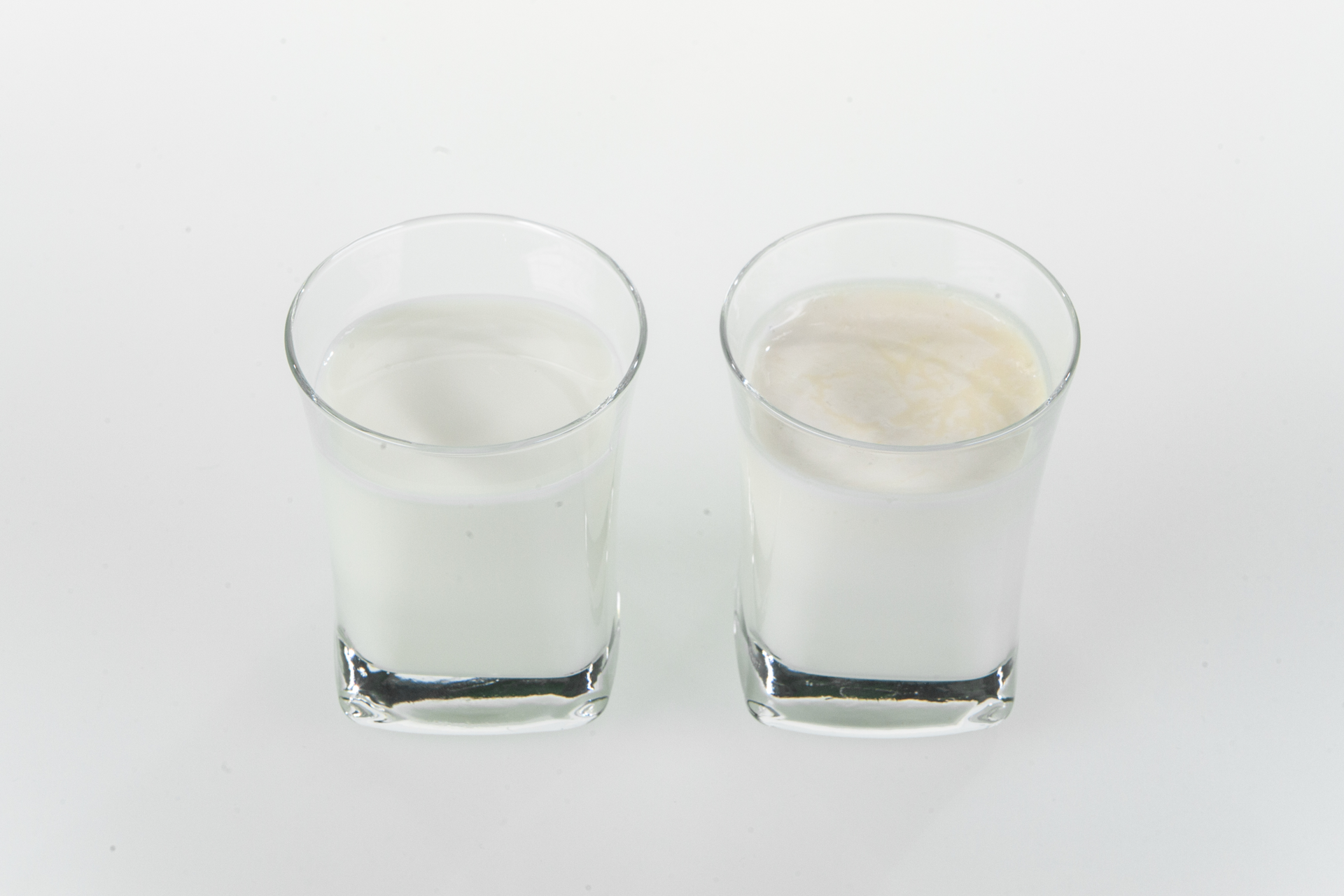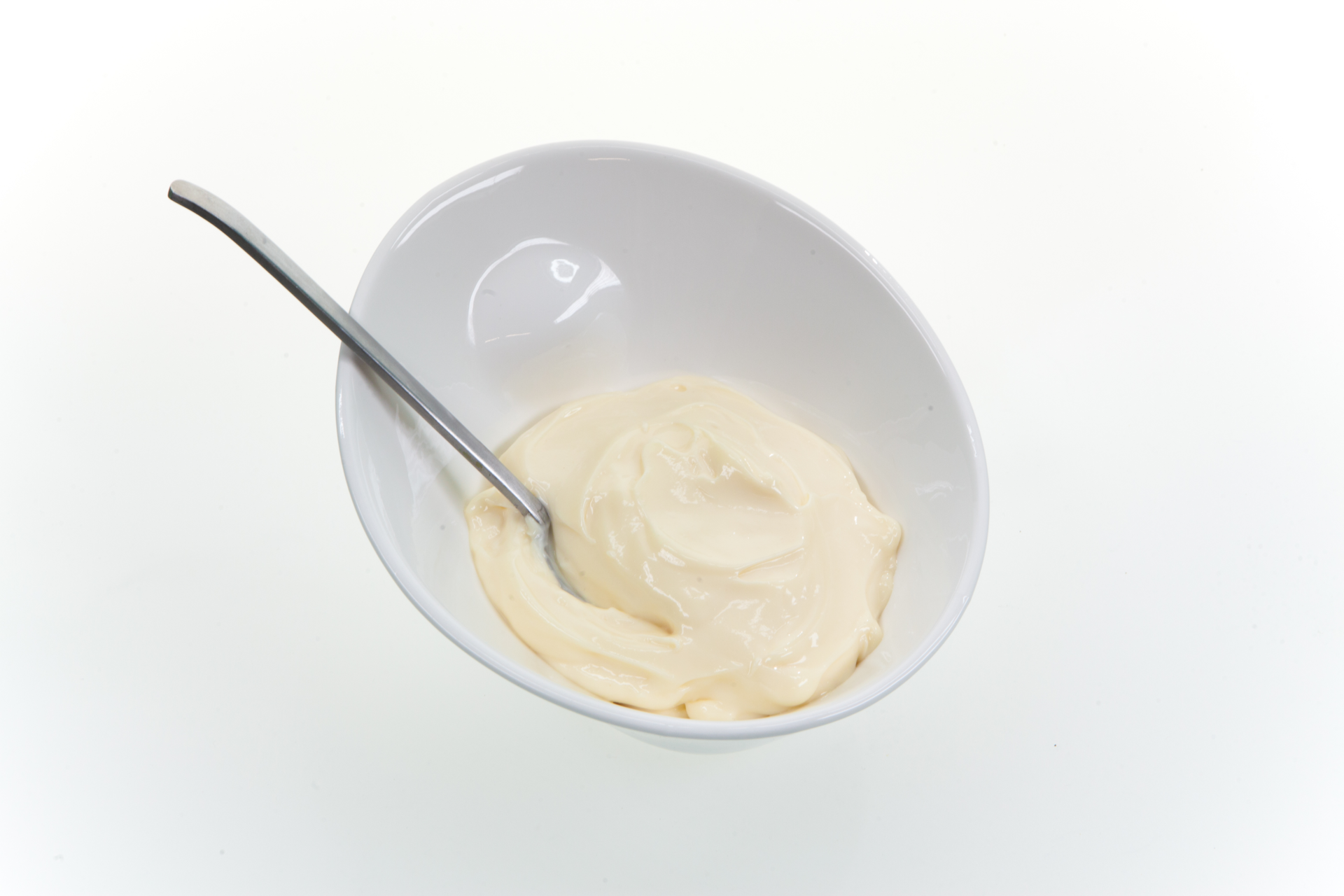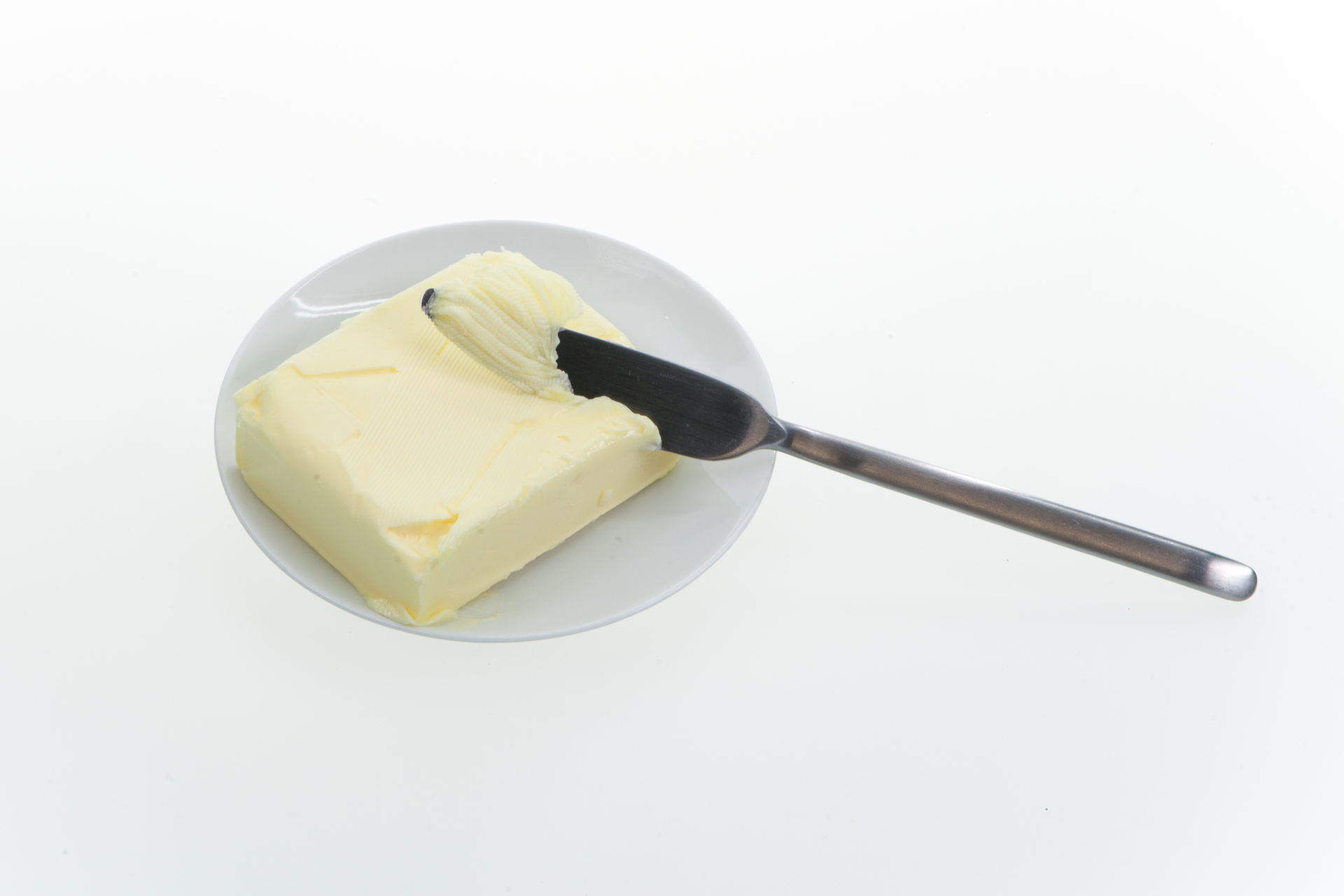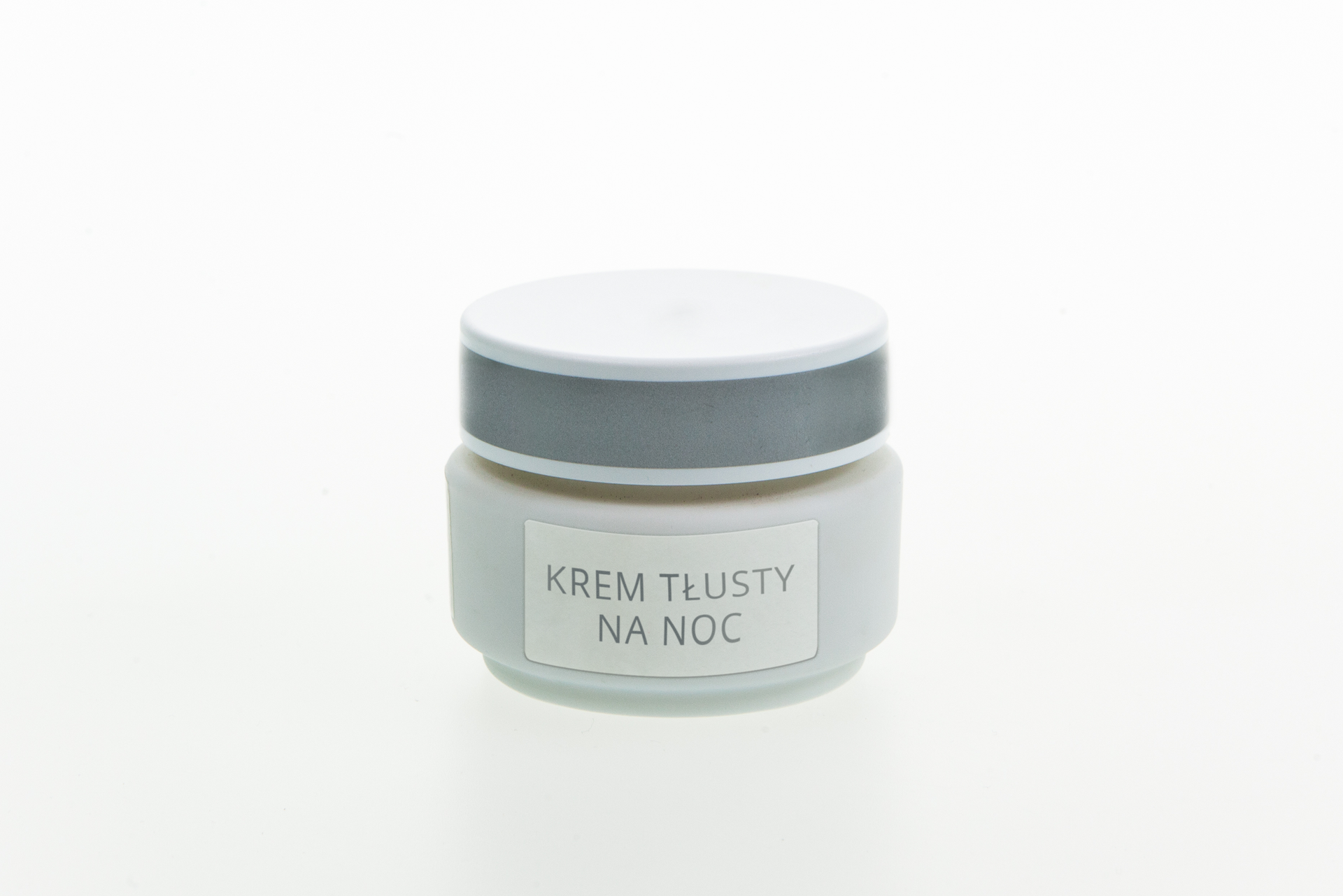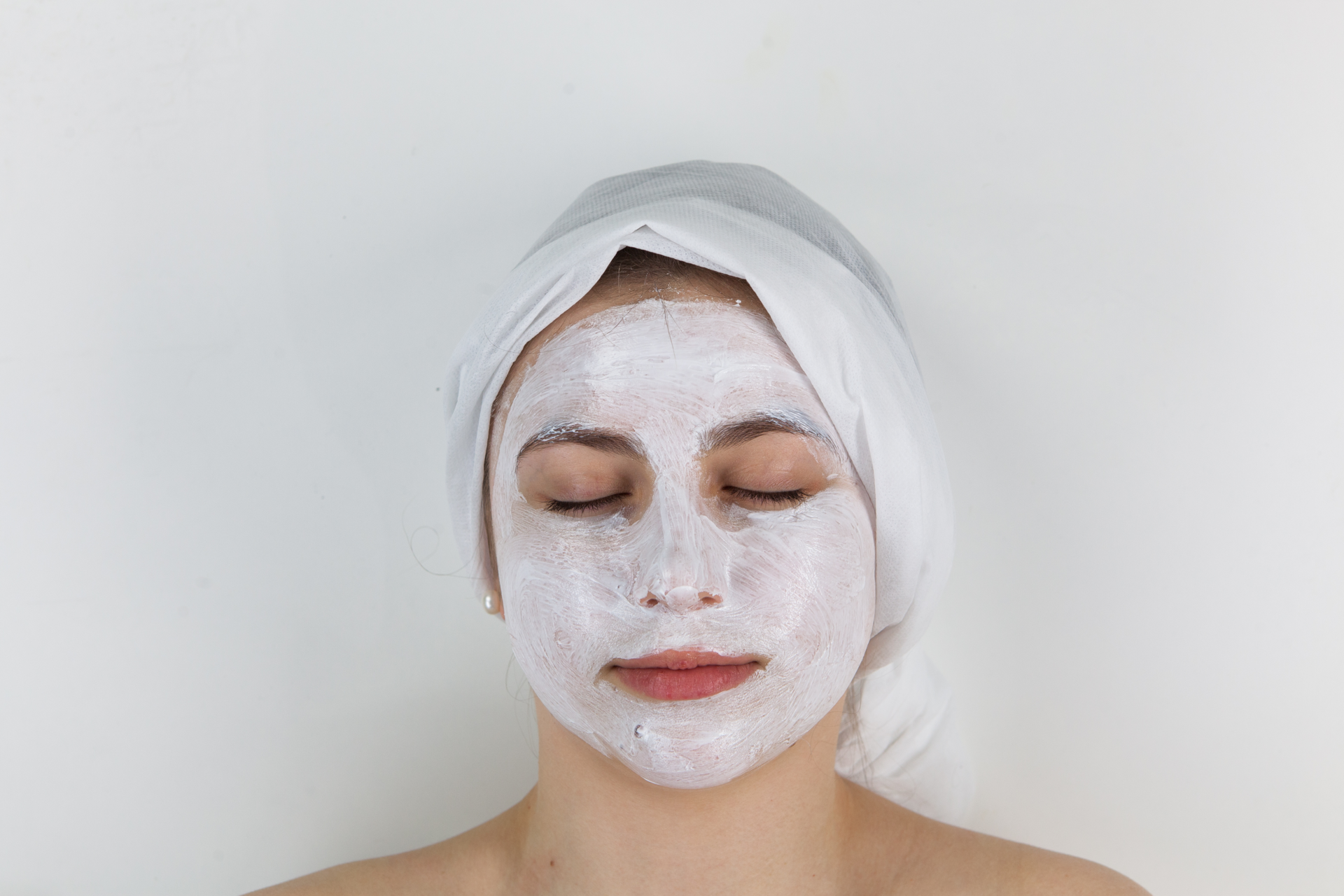Emulsion as a colloidal system
what the structure of water molecule is and what consequences arise of it;
what colloids are and what their properties are;
how surfactants work;
what detergents are and what their properties and application are.
to explain what emulsion is;
to list applications of emulsion, giving various examples of such compounds;
to provide the basic composition of the emulsion;
to explain what an emulsifier is and how it works;
to list the composition of selected emulsions, for example cream, balm, teeth paste;
to discuss how various cosmetics work, for example cream, balm, toothpaste;
to justify differences in effect of moisturizing and oiling emulsion on human skin;
Emulsions
Two liquids, such as water and alcohol, when mixed form a true (molecular) solution, in which there is no boundary between both liquids. Other liquids, such as oil and water, do not mix with each other, but they form two separate layers. This is why oil molecules cannot overcome the forces that bind polar water molecules.
Write the definition of emulsion after watching the video “Emulsions”.

Film dostępny na portalu epodreczniki.pl
Eksperyment zaczyna się prezentacją solute - sześcian złożony z czerwonych kulek ułożonych kwadraty trzy na trzy oraz solvent przedstawionego jak ciecz w zlewce złożonej z niebieskich kuleczek oraz solution cieczy w zlewce złożonej z niebieskich oraz czerwonych kuleczek. W drugiej scenie filmu przedstawiona jest zlewka w której znajduje się oil i water. Olej tworzy tłustą, nieprzepuszczalną warstwę na powierzchni wody oznaczoną żółtą warstwą woda jest oddzielona oznaczona niebieską warstwą. Woda jest zatem niemieszalna z tłuszczem. Tłuszcz w połączeniu z wodą oddziela się i tworzy warstwę na powierzchni. Tak powstają lody, majonez, kremy, śmietana, farby. Zatem substancje nie zawsze się mieszają np. gdy woda z olejem się wymiesza nie łączą się tylko tworzą dwie oddzielne warstwy. Po wlaniu oleju do wody powstaje emulsja (immiscible). Codzienne przykłady takich nie mieszalnych emulsji to np. majonez, lody czy farba. Większość z nich ma tłuszcz w wodzie ale są też przykłady wody w tłuszczu np margaryna, balsam czy krem do twarzy. Najbardziej popularnym przykładem są lody tworzą je mleko, śmietana cukier i barwniki. Co w takim razie zabezpiecza emulsje jaką są lody od rozwarstwiania? Substancje zwane emulsifiers czyli emulgatorami stabilizującymi emulsję. Przy produkcji lodów wykorzystywane jest żółtko jajka. Aktywny emulgator w żółtku nazywa się lecithin czyli lecytyna. Za mało lecytyny spowoduje że lody się rozwarstwią, a za dużo że będą miały złą teksturę. Wszystkie emulgatory składają się z 2 składników : hydrofilowych główek i hydrofobicznych ogonków. Gdy dodamy lecytynę do emulsji składającej się z wody i oleju hydrofiliczna głowa będzie łączyć się w wodą, a hydrofobiczny ogonek z olejem. To właśnie zapobiega rozwarstwieniu czyli stabilizuje emulsje.
Before you doing the experiment “Mixing oil with water”, write down a research question and a hypothesis.
Is it possible to make oil and water mix?
Water molecules are polar and oil molecules are not polar. Oil and water mix only in presence of a surfactant, such as a dishwashing soap.
test tubes with stoppers,
glass rod,
water,
oil,
dishwashing soap.
Pour about 3 cmIndeks górny 33 of both oil and water to the test tube.
Shake well. Observe what is happening.
Pour about 3 cmIndeks górny 33 of both oil and water to the second test tube and add a few drops of dishwashing soap.
Shake the test tube. Observe what is happening.
Compare the appearance of mixtures in both test tubes.
When you mix water and oil, oil drops are dispersed in the water – this is how emulsionemulsion is created. The difference in surface tension between mixed substances plays an important role in this process – the less it is, the easier is to create emulsion. Dispersion by shaking, intense mixing requires work. Such emulsion is unstable – after some time these liquids will again divide themselves into two layers – oil (with lower density) stays on the top and water remain on the top. Emulsion will be fixed is you add dishwashing soap, which is the so‑called emulsifier.
Emulsions are systems consisting of immiscible liquids, where one liquid is dispersed in the second one as tiny drops. One phase (layer) is usually created by water, while the second one is an liquid immiscible with water, called the oil phase. As the structure is fragmented, emulsion seems to be homogeneous, while its heterogeneous structure can be observed only under a microscope (due to the size of dispersed phase). Emulsions are a certain type of colloids.
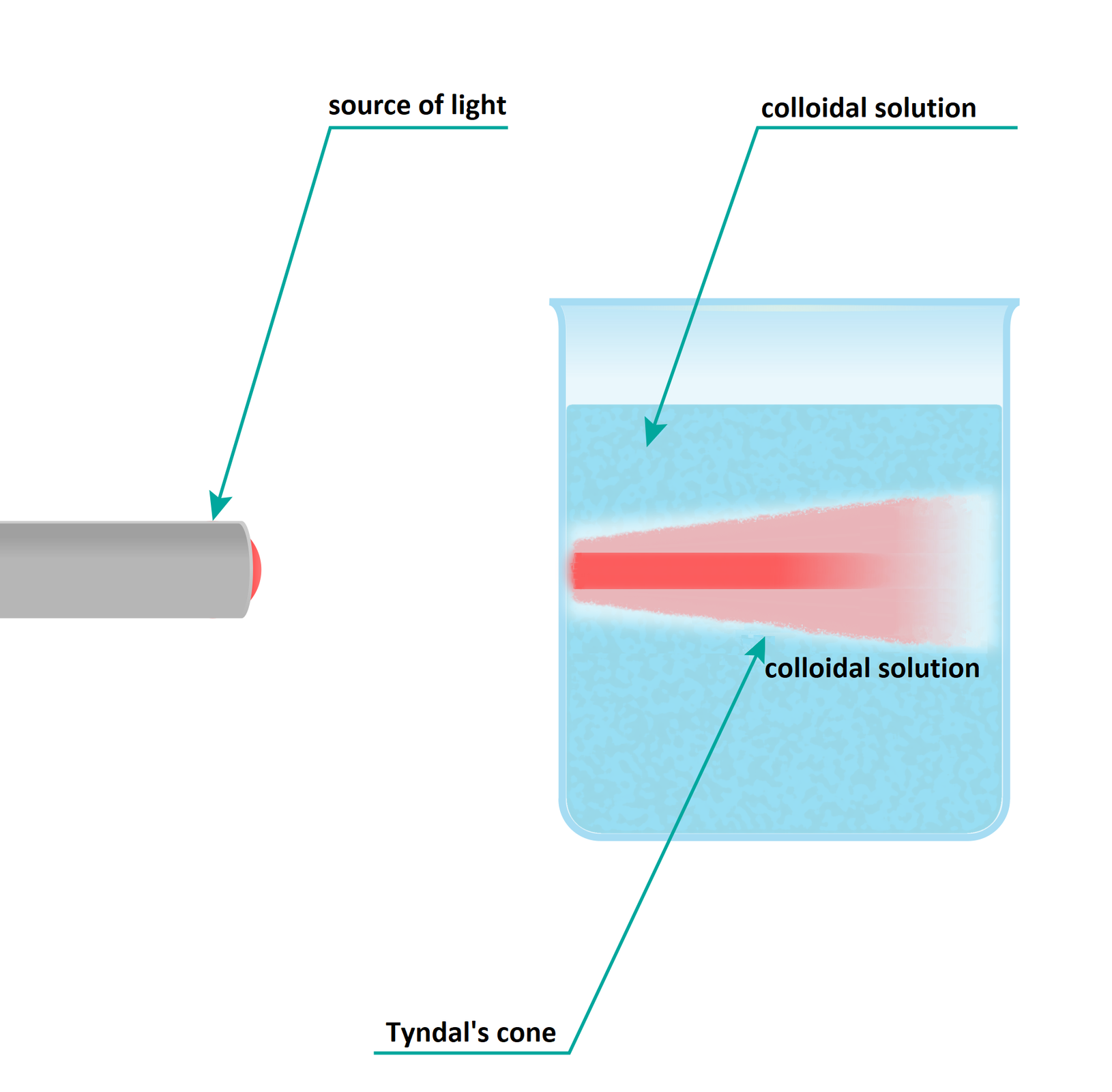
In colloidal solutions, the solute particle sizes are larger than in true solutions and range from 10Indeks górny -7-7to 10Indeks górny -9-9 m. These solutions consist of the dispersing phase which plays the role of a solvent and dispersed substance (phase) which corresponds to a solute in true solution. They scatter light falling on the solution. This is the typical property of colloidal solutions and is called the Tyndall effect.
The structure of an emulsion can be described using their phase system and volumetric ratios. Due to the mutual phase system, two types of water‑in‑oil w/o and oil‑in‑water o/w emulsions can be distinguished.
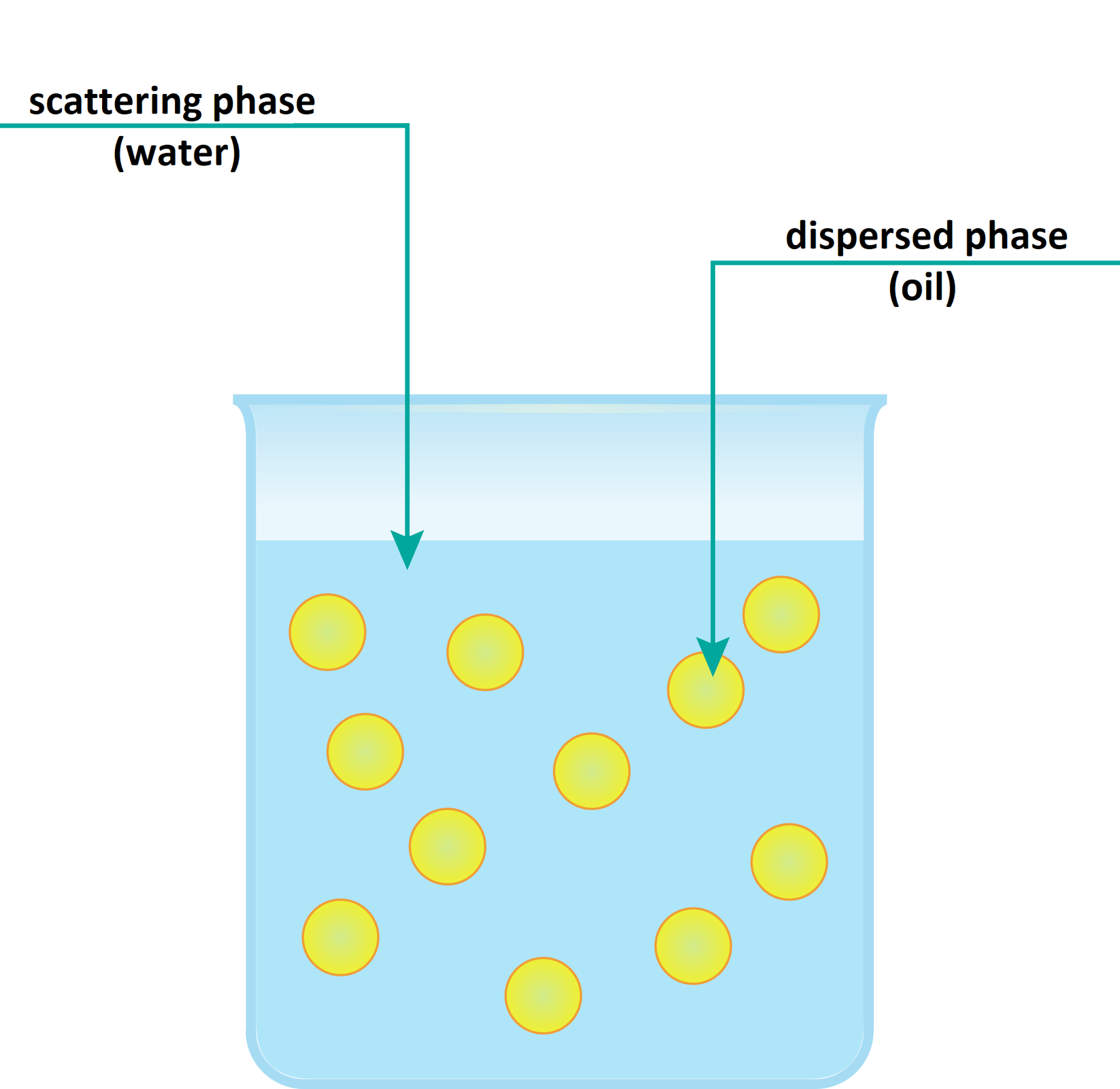
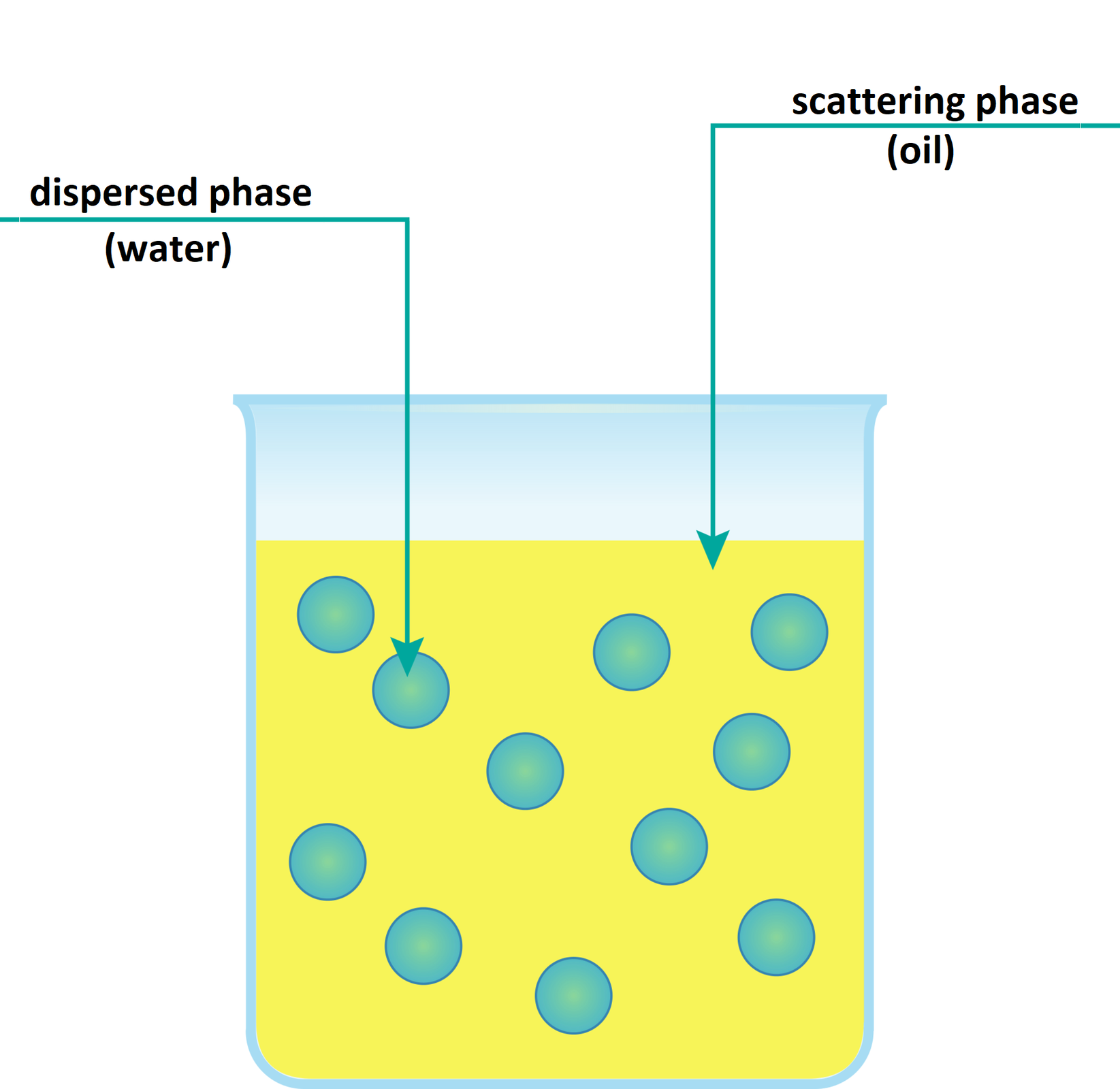
There are also multiphase emulsions – in their case it is not possible to determine exactly which phase is dispersed and which is being dispersed, because each one contains drops from the other phase.
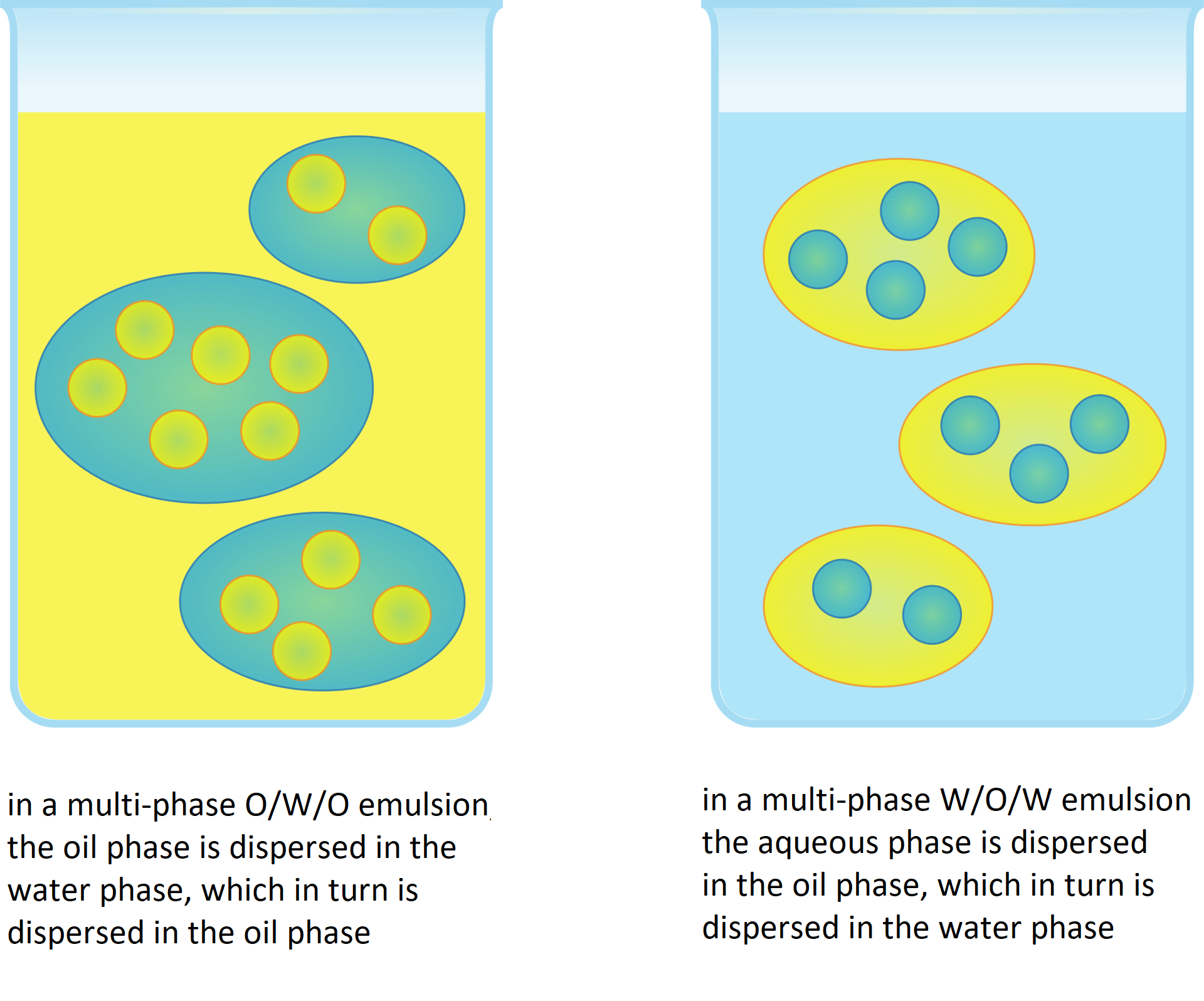
Emulsion may be stable due to the presence of emulsifiers. An emulsifier usually dissolves better in one of two phases.
EmulsifiersEmulsifiers are surfactants with hydrophobic and hydrophilic properties that form a molecular layer on the surface of the droplets of the dispersed liquid. The examples of emulsifiers include for example soaps, detergents, esters of polyhydric alcohols and natural substances such as gelatin, agar‑agar, lanolin, lecithin, and gum Arabic.
Creams
The simplest cream consists of fat, water and an emulsifier. Often creams contain more than one emulsifier because it ensures better stability and ensures that it will not break into layers. Some emulsifiers are both hydrophobic and hydrophilic. They are good for health and healthy look, for example lecithin, lanolin, cholesterol.
Before you watch the video “Determining the type of cosmetic emulsion”, write down a research question and a hypothesis.
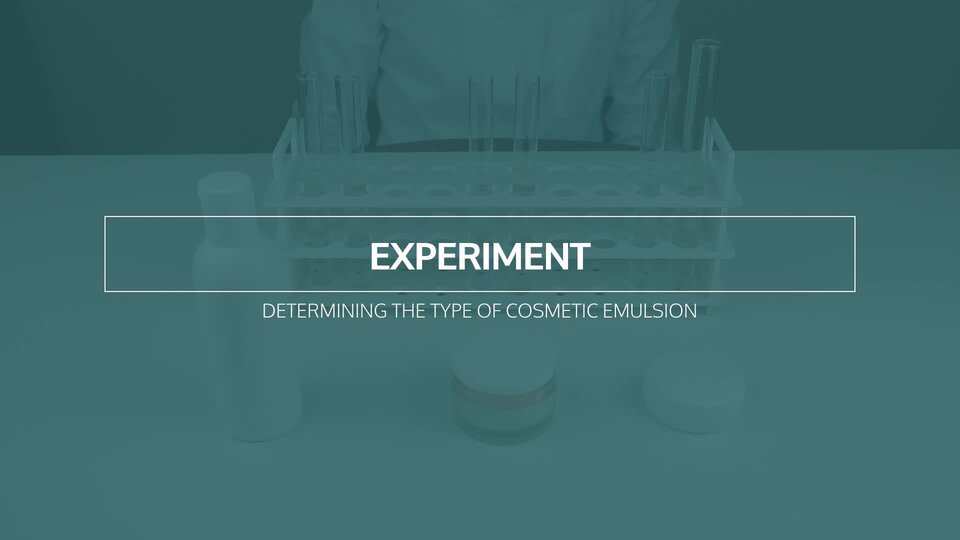
Film dostępny na portalu epodreczniki.pl
Film pokazuje eksperyment. Problem badawczy: Jak rozpoznać i określić typ emulsji kosmetycznej? Hipoteza: Typ emulsji można rozpoznać, badając, jak rozcieńcza się ona w wodzie, a jak w oleju. Będziesz potrzebować: probówki, cylinder miarowy, woda destylowana, olej parafinowy, mleczko kosmetyczne, krem nawilżający lub inne emulsje kosmetyczne. Instrukcja: Do jednej probówki wlej dziesięć centymetrów sześciennych oleju parafinowego, a do drugiej probówki – dziesięć centymetrów sześciennych wody destylowanej. Do każdej probówki dodaj kilka kropli mleczka kosmetycznego. Wymieszaj dokładnie zawartość probówek (poprzez energiczne wytrząsanie lub za pomocą bagietki szklanej). Obserwuj zachodzące zmiany. Czynności powtórz w przypadku jeden do dwa gramów kremu nawilżającego oraz innych badanych emulsji kosmetycznych.
How to identify and determine the type of cosmetic emulsion?
The type of emulsion can be identified studying how it dilutes in water and oil.
test tubes,
graduated cylinder,
distilled water,
paraffin oil,
cleansing milk, moisturizing cream or other cosmetic emulsions.
Pour 10 cmIndeks górny 33 of paraffin oil into one test tube and 10 cmIndeks górny 33 of distilled water into the other.
Add several drops of cleansing milk to each test tube.
Mix the contents of the test tubes thoroughly (shaking it vigorously or using a glass rod). Observe what is happening.
Repeat the above steps using 1–3 g of moisturizing cream and other cosmetic emulsions.
Cosmetic emulsions
Each cosmetic emulsion consists of a fat‑wax base, emulsifiers, additional raw materials and water. Its ingredients are selected based on the purpose and mode of action of the cosmetic preparation as well as on the emulsion type we intend to obtain. Creams, lotions and cleansing milks are typical examples of emulsions.
The consistency or density of emulsions depends on the content of the dispersed phase, emulsifier type, viscosity of dispersed phase and presence of substances in this phase that affect the consistency of the cosmetic.
Emulsion type | Content of dispersed phase | Application |
O/W | 20–30% | moisturizing creams, lotions, body lotions, masks, deodorants, some hair conditioners |
O/W | > 20–30% | creams, night creams, lightweight under‑eye creams, lotions, some hair conditioners |
W/O | 20–40% | heavy creams, night creams, under‑eye creams, versatile creams, protective creams, make‑up removers |
Mark true statements.
- An emulsifier is a mediator between a hydrophobic and hydrophilic substance.
- In a W/O emulsion a hydrophobic substance is dispersed in a hydrophilic substance.
- In an O/W emulsion an emulsifier is surrounded by droplets of fat, preventing them from re-binding.
- Lecithin contained in egg yolk is an emulsifier in mayonnaise.
- A true solution differs from a colloidal solution in that the Tyndall effect is observed in case of the second one; as the light passing through a true solution disperses on molecules of dispersed substance, forming a characteristic cone.
Summary
An emulsion is composed of microscopic droplets of liquids dispersed in the entire volume of the second liquid. Mayonnaise is an emulsion in which small droplets of vinegar are dispersed in vegetable oil. Milk is an emulsion in which fat droplets are dispersed in an aqueous solution. Typical emulsions are mixtures of water‑insoluble (organic and mineral) oils and water.
Types of emulsions one of the components of which is water: O/W (oil in water) – oil is the dispersed phase, water is the dispersing phase, for example milk; W/O (water in oil) – water is the dispersed phase, oil is the dispersing phase, for example margarine.
It is not possible to obtain a stable emulsion without an emulsifier which binds hydrophobic and hydrophilic liquids. These are surfactants the structure of which make them arrange themselves along the boundary of both liquids. A part of them is immersed in a hydrophilic polar liquid and the other in a hydrophobic liquid. An emulsifier is needed to create an emulsion and increases its stability.
Emulsifiers are widely used in pharmacy and food industry, for example lecithin is used to produce margarine.
Keywords
emulsion, dispersed phase, emulsifiers, dispersing phase
Glossary
emulsja – mieszanina dwóch lub więcej cieczy, które się ze sobą nie mieszają; jedna ciecz rozproszona jest w drugiej w postaci małych kropelek; przykładem emulsji jest mleko
faza rozproszona – inna nazwa to faza zdyspergowana, jest w emulsjach odpowiednikiem substancji rozpuszczonej
faza rozpraszająca – inna nazwa to faza dyspersyjna, pełni rolę rozpuszczalnika w emulsjach i innych roztworach koloidalnych
emulgatory – substancje ułatwiające tworzenie się emulsji i nadające jej trwałość; gromadzą się na powierzchni granicznej dwóch cieczy tworzących emulsję, zmniejszają silnie napięcie powierzchniowe i zapobiegają zlepianiu się kropelek emulsji, emulgatorami są na przykład detergenty
